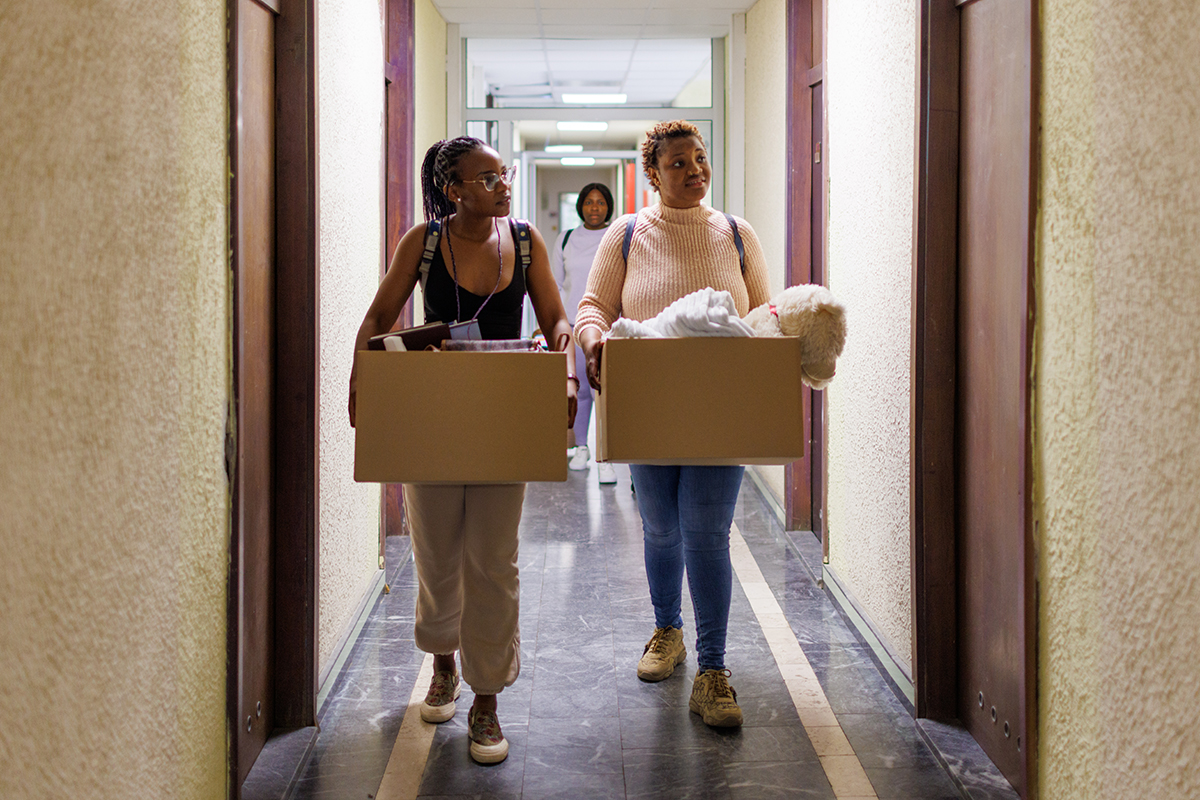
Popular Locations
- NEMG Internal Medicine - New Haven
- NEMG Internal Medicine - Orange
- NEMG Internal Medicine - Trumbull

Published August 11, 2023

Heading off to college? Wondering what to pack? Don’t leave home without our top tips to help you take charge of your health so you can navigate college in top form.
Once on campus students find there’s so much to learn and so much to do. Students can find themselves outdoors a lot, starting with move-in day and welcome social activities. It’s all good – as long as you remember your sunscreen. “The number-one way to avoid a sunburn is to use a sunblock with a high SPF [sun protection factor],” explained Katharine Straw, APRN, Northeast Medical Group who practices at the University of New Haven’s student health center. “I usually start with an SPF of 50 and make sure to reapply as directed on the bottle.”
Other methods to protect your skin include wearing a hat with a wide brim and UPF clothing. UPF stands for ultraviolet protection factor, which rates how much of the sun’s ultraviolet rays can penetrate the fabric.
Students should visit their campus health center if a sunburn:
Insect bites can ruin anyone’s day. Mosquitoes, bees, wasps and ticks are big offenders. Students can avoid bites by using insect repellents and wearing long sleeves and long pants when outside. However, if they do manage to get bitten, the Centers for Disease Control (CDC) recommend several treatments including:
Any bump or blow to the head that causes the brain to move back and forth leads to a concussion according to Chelsea Huskins, APRN, Sacred Heart University Student Health Center at Yale New Haven Health’s Park Avenue Medical Center. Whether sustained during athletic activity or an accident, Huskins said concussions are serious, and students should seek medical attention if they or someone they know has suffered one.
Signs that someone they know may have a concussion include:
Symptoms of a concussion include:
Huskins notes that dealing with homesickness, stress and new situations can take a toll on a young adult’s mental health. The CDC reports that students with poor mental health tend to struggle with school and decision making which leads to other behavioral risks like drug use, violence and risky sexual behavior.
The good news is that building strong bonds with adults and friends, helps prevent a number of these negative experiences. Huskins said the feeling of connectedness is important and can protect students from poor mental health. It helps to know there are people who care about them.
Related to mental health, Straw said suicide is a serious public health issue. According to the American College Health Association, the suicide rate among young adults ages 15-24 has tripled since the 1950s. Suicide is currently the second most common cause of death among college students. There are actions students, colleges and families can take to reduce the risk of suicide and provide the help needed. Watch for signs such as depression, anxiety, substance abuse, relationship problems, recent crisis, physical health problems, legal troubles, loss of housing, financial challenges, changes in grades and class attendance. You can also:
The national suicide and crisis lifeline is available 24/7/365 to help anyone experiencing a mental health crisis or is worried about a loved one. Call or text 988 to connect with a trained crisis counselor. All calls and texts are free and confidential.
According to the American Academy of Orthopaedic Surgeons, a sprain happens when the support ligaments in the ankle stretch too far and tear. Despite being one of the most common activity-based injuries in the U.S. most sprains heal with some combination of rest, elevation and over-the-counter medications.
Straw said students should seek immediate care if they are unable to walk immediately after the injury. An X-ray may be needed if the ankle remains swollen or painful after a week or two of at-home treatment.
Sore throat is not always related to an infection, so don’t jump to the conclusion that you need antibiotics. Your sore throat may be caused by:
Huskins recommends treatments like cough drops, gargling with salt water and drinking warm beverages. However, if the sore throat is accompanied by a fever, runny nose and pain when swallowing it could be a case of strep throat or a virus such as flu. This is when students should seek professional care. Straw adds that students should also visit their campus health center for a
COIVD-19 test. Always remember to use good hand hygiene to reduce the risk of spreading germs.
Common transmissible diseases like a cold along with everyday bumps and bruises make up the majority of the cases Huskins sees at the student health center. She said many of these cases can be effectively treated in the dorm as long as the patient has the appropriate tools.
“I tell everyone to pack a mini first aid kit as they’re getting ready to come to campus,” she said. “Make sure it has the basics including an over-the-counter pain killer like aspirin or ibuprofen, bandages, cough medicine, antacid and an antihistamine. That will cover most things. But if you find that the issue isn’t getting better after a few days, or you’re not sure what to do, give us a call or make an appointment.”
Straw added that students shouldn’t avoid the health center because they fear a lecture. “There are no judgements here,” she said. “We want to teach you how to be good health care consumers and if we can accomplish that together, it will go a long way towards better health in the future.”